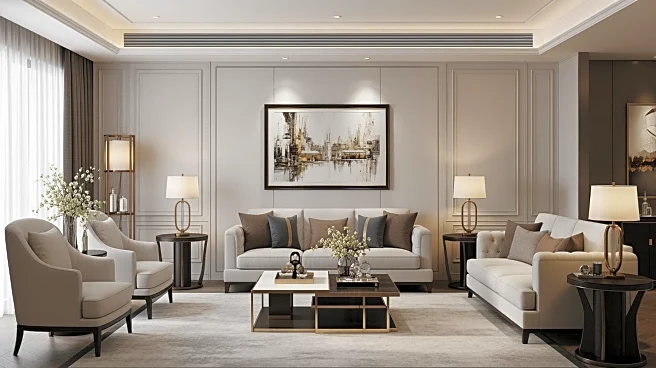What's Happening?
Branded residences, luxury homes associated with well-known brands, are becoming increasingly popular among developers and investors. These residences offer hotel-like services and convenience, allowing
residents to live the lifestyle of their favorite brands. The sector has grown rapidly since the 1980s, with luxury hotel brands like Rosewood, Mandarin Oriental, and Aman leading the market. These residences are often located in prime locations and feature beautiful design and architecture. The demand for branded residences is driven by experience-driven individuals seeking unique and exclusive living environments. The sector has seen a 180% growth in the last decade, with a compound annual growth rate between 11% and 17%.
Why It's Important?
The rise of branded residences is significant for the real estate market, offering high premiums compared to unbranded properties. According to Savills, branded residences command an average premium of 33% globally, with emerging cities seeing the highest markups. This trend reflects a shift towards experiential living, where luxury branding builds a sense of exclusivity. Investors and developers benefit from the added value brands bring to real estate, with branded residences proving more resilient in economic downturns. The sector's growth is fueled by an increasing number of affluent individuals who can afford such offerings, making it a lucrative investment opportunity.
What's Next?
The supply of branded residences is expected to double by 2030, responding to continued demand for experiential and branded living. Emerging markets, particularly in the Asia Pacific, are leading development, with strengthened GDPs and an increase in wealthy individuals driving growth. Non-hotel brands, including fashion and automotive companies, are expanding into residential real estate, offering diversification and brand storytelling opportunities. As the sector matures, brands must innovate, particularly in tech and wellness-focused experiences, to differentiate their offerings and attract buyers.
Beyond the Headlines
Branded residences represent a unique ecosystem for living and working, catering to consumers' call for exclusivity and branded lifestyles. While the sector offers significant investment opportunities, it also presents challenges, such as misalignment between ownership and brand agreements. Non-hotel brands face the challenge of communicating brand value, requiring projects to be thought out to the smallest detail. Despite these challenges, branded residences are a compelling asset that combines residential real estate with a lifestyle brand, delivering exclusive living that reflects the prestige and emotional connection associated with favorite brands.














